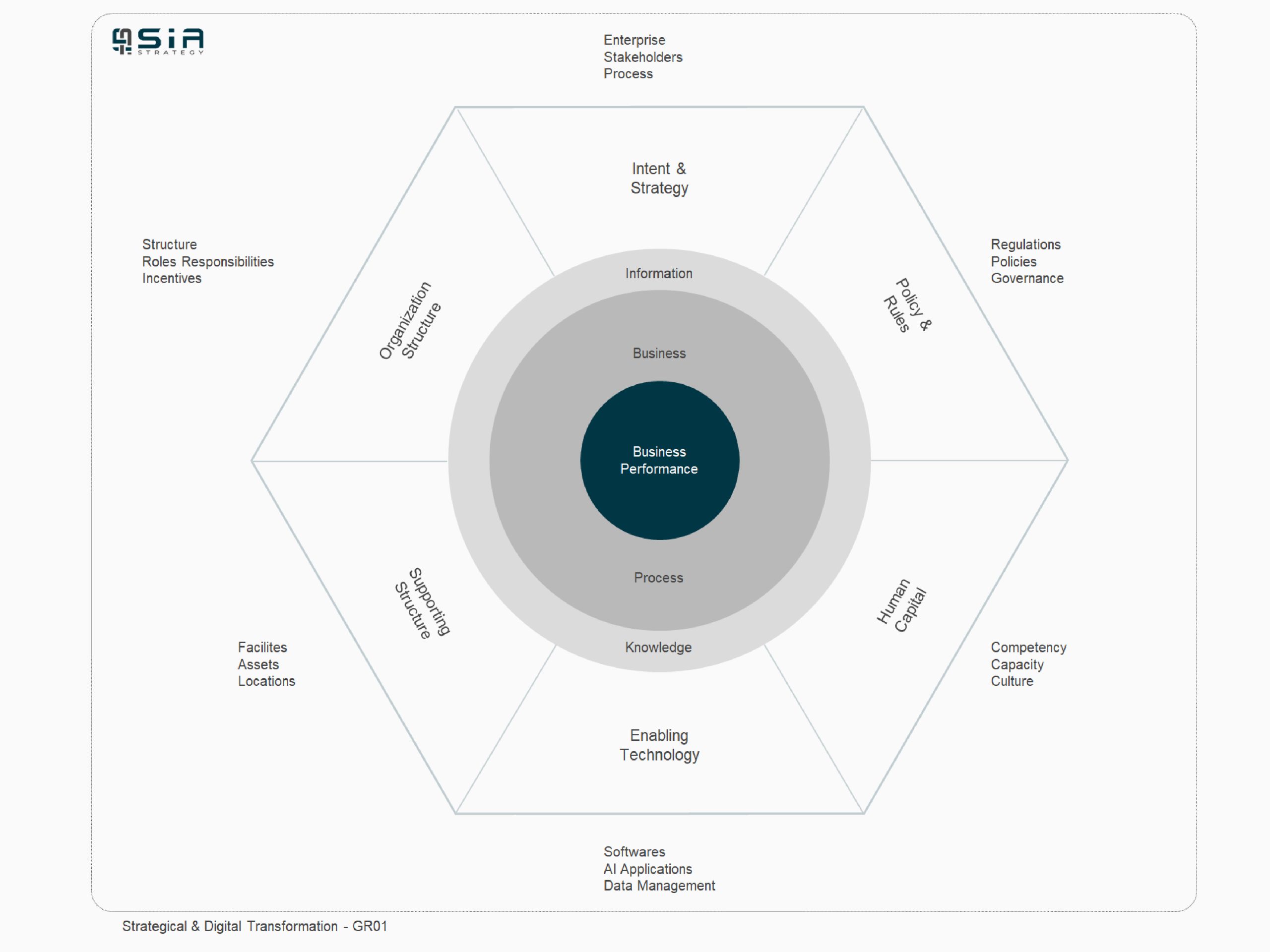Business Architecture
We develop tailored solutions that align business processes, technology infrastructure, and data management strategies to meet the unique needs of our clients. Our approach begins with a comprehensive analysis and documentation of the organization’s current business processes, capabilities, and organizational structure. We delve into understanding the core business goals and objectives, ensuring these are clearly defined and aligned with the overall strategy. By identifying key stakeholders and understanding their needs and expectations, we can effectively map out business processes and workflows that are both efficient and scalable. This holistic approach not only optimizes existing operations but also lays a strong foundation for future growth and innovation, ensuring that the organization is well-positioned to respond to changing market conditions and technological advancements.

KEY OFFERING
Assessment and Strategy Development
This phase involves assessing the current state of the organization’s technology, processes, and culture. It also includes defining strategic objectives and creating a roadmap for digital transformation.
Technology Adoption and Integration
Once the strategy is in place, organizations need to adopt and integrate new technologies that align with their digital goals. This may include cloud computing, data analytics, artificial intelligence, Internet of Things (IoT), and other emerging technologies.
Process Optimization
Digital transformation often requires rethinking and optimizing existing processes to take advantage of new technology capabilities. This may involve automating manual tasks, streamlining workflows, and improving efficiency.
Cultural Change and Talent Development
Cultural change is a crucial aspect of digital transformation, as it involves shifting mindsets, behaviors, and ways of working to embrace innovation and agility. Organizations also need to invest in talent development to ensure employees have the skills and knowledge needed for digital success.
Customer Experience Enhancement
Improving the customer experience is often a central goal of digital transformation initiatives. This may involve creating personalized experiences, enhancing digital channels, and leveraging data to better understand and meet customer needs.
Data-driven Decision Making
Digital transformation relies heavily on data-driven decision-making processes. Organizations need to collect, analyze, and leverage data effectively to gain insights, inform strategy, and drive continuous improvement.




